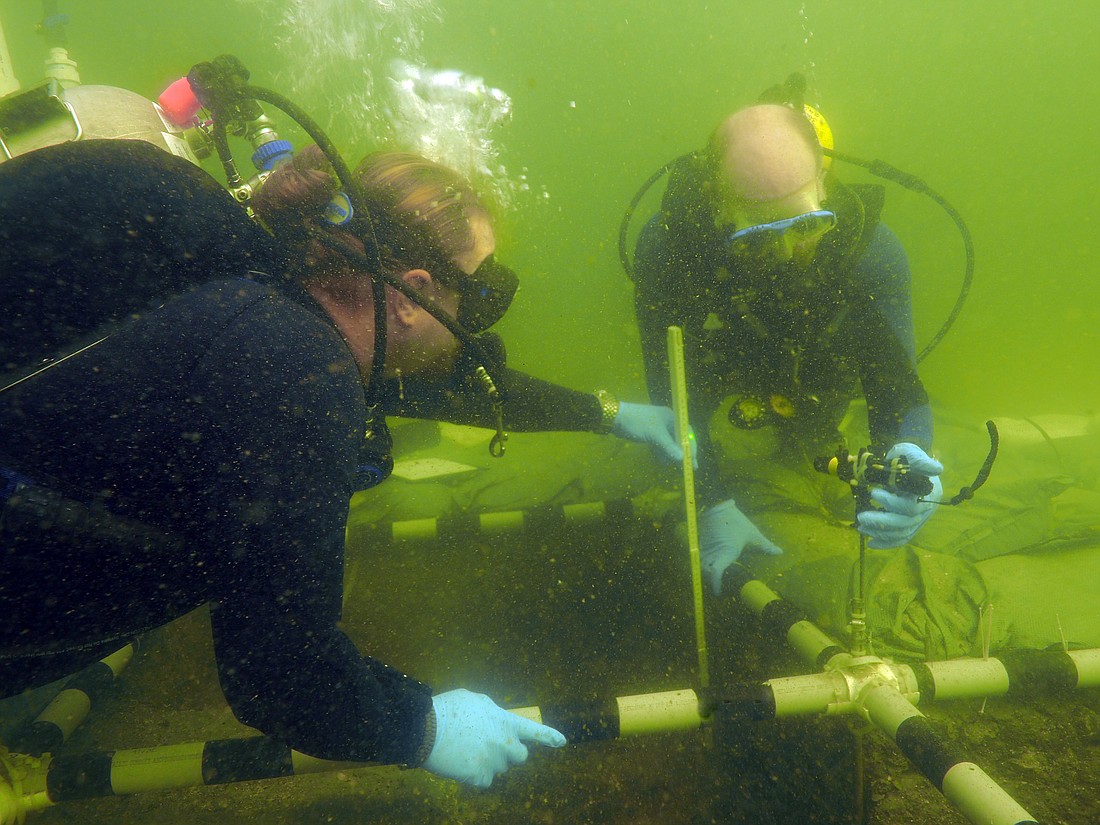- April 29, 2024
-
-
Loading

Loading

A 7,200-year-old Native American burial ground discovered about 250 yards off Manasota Key will be getting new marker buoys this spring, warning recreational divers and potential artifact hunters to stay away.
Sarasota County’s archaeologist, Steven Koski, said the site — which he did not wish to pinpoint to protect it — was discovered in 2016, after a diver hunting for fossils reportedly found a human skull in the sea floor.
News of the discovery reached the Florida Bureau of Archaeological Research and a team of researchers was dispatched to the site. Koski, an expert in underwater prehistoric sites, worked with state researchers for several years to document the area.
They found other bone fragments and well-preserved carved wooden markers. Using carbon-dating techniques, the area was determined to have been a fresh or brackish marsh 7,200 years ago. It was also inland and probably 20 feet or more above sea level. Rising seas since then have put the site 21 feet underwater.
“The discovery is amazing,” said John McCarthy, vice president for regional history at Marie Selby Botanical Gardens, who has given local lectures about the site.
Koski went even further.
“I would call it phenomenally unique, an exceptionally unique, outstanding discovery,” he said.
Koski said since the wood was buried in a peat bog that kept oxygen and bacteria at bay, leaving it in remarkable condition.
Researchers have studied the artifacts at the site and have taken core samples of the peat, which can provide clues about what the area was like seven centuries ago, Koski said.
“You can tell what was in the peat; what salinity the peat was by the fossil inclusions that are encapsulated in the peat itself,” he said.
He added that analysis of pollen found in the peat can also yield clues.
“So you can get an understanding of the time period of occupation or burial. And that helps reconstruct the environment that the people were living in,” he explained. “It's a window to a specific time.”
Koski said the indigenous peoples in the late early archaic and middle archaic periods used freshwater ponds, marshes and sloughs as cemetery sites.
“They're called mortuary ponds,” he said. “And there's about five known in South Central Florida itself.”
“It's a good question as to why,” these ancient inhabitants buried their dead in a saturated wet environment. Scientists don't know the answer to that question, and he added evidence of the practice has not been seen anywhere else in the world.
Koski noted archaeologist have found bog burials in Europe, but experts do not believe they are cemetery sites.
“They may have been body disposal sites but not ceremonial burial sites like we have in South Florida.”
While there is still research that can be done with the core samples collected, Koski said no artifacts or human remains will be removed from the site and no efforts to preserve the site will be undertaken.
“We had discussions about it,” Koski said, referring to a number of meetings with interested parties, including the state historic preservation officer, the Manasota Key Association and Florida Gulf Coast University’s forensic lab.
The talks also included the Seminole Tribe, which claims the remains as ancestors.
“Certainly, the whole Southeast had a relationship of Native Americans between tribes,” Koski said. “And with their mobility through time, we can't deny that they're part of their ancestral and genetic lineages.”
The Seminole Tribe was against efforts to preserve the site.
“They said just leave it alone and let nature take its course, and prevent any looting and desecration by people,” Koski said. “So that’s what was done.”
“We do know that the site is continuing to erode,” he added.
If you’re thinking about taking a look for yourself, don’t.
The 24,000-square-foot area is protected under Florida law. Fishing is allowed there, but no boat may anchor there, Koski said. No diving is permitted.
The site is routinely monitored to make sure it is not disturbed, Koski said.
It’s a first-degree misdemeanor to remove artifacts from an archaeological site without authorization.
It’s also a third-degree felony to knowingly disturb, destroy, remove, vandalize, or damage a human burial, underwater or not.